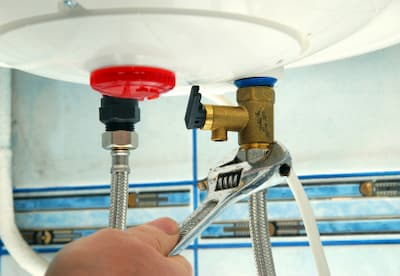This article down below involving How to Maintain a Hot Water Heater in a Few Simple Steps is truly intriguing. You should investigate for yourself.

Warm water is essential for everyday convenience, whether it's for a rejuvenating shower or cleaning meals. To guarantee your hot water system runs successfully and lasts much longer, normal maintenance is essential. This write-up gives useful ideas and insights on how to preserve your home's warm water system to prevent disturbances and costly repair work.
Introduction
Preserving your home's warm water system could appear difficult, yet with a few easy steps, you can guarantee it runs efficiently for several years ahead. This guide covers everything from understanding your hot water system to DIY maintenance suggestions and understanding when to employ specialist help.
Importance of Maintaining Your Warm Water System
Regular maintenance not only extends the lifespan of your warm water system yet additionally guarantees it runs effectively. Ignoring upkeep can bring about decreased efficiency, greater power costs, and also premature failure of the system.
Signs Your Hot Water System Requirements Maintenance
Knowing when your hot water system requires focus can stop major issues. Watch out for indicators such as inconsistent water temperature, odd noises from the heating unit, or corroded water.
Purging the Water Heater
Purging your hot water heater removes sediment buildup, improving efficiency and lengthening its life.
Monitoring and Replacing Anode Rods
Anode rods protect against rust inside the tank. Checking and replacing them when broken is critical.
Complicated Issues Calling For Expert Help
Examples consist of major leaks, electric problems, or if your hot water heater is constantly underperforming.
Routine Professional Upkeep Advantages
Specialist maintenance can consist of complete evaluations, tune-ups, and ensuring conformity with security standards.
Checking and Adjusting Temperature Level Settings
Readjusting the temperature settings ensures optimum performance and safety and security.
DIY Tips for Upkeep
You can execute a number of upkeep jobs on your own to keep your warm water system in top condition.
Looking for Leaks
Consistently check pipelines and connections for leakages, as these can bring about water damage and higher expenses.
Comprehending Your Hot Water System
Before diving right into upkeep tasks, it's handy to understand the fundamental elements of your warm water system. Commonly, this includes the water heater itself, pipelines, anode poles, and temperature controls.
Regular Monthly Maintenance Tasks
Normal regular monthly checks can aid catch small concerns prior to they escalate.
Evaluating Stress Alleviation Valves
Testing the pressure relief valve ensures it functions properly and protects against excessive pressure accumulation.
Protecting Pipelines
Insulating warm water pipes reduces heat loss and can save power.
When to Call a Specialist
While do it yourself maintenance is useful, some concerns call for professional competence.
Verdict
Normal upkeep of your home's warm water system is essential for efficiency, longevity, and cost savings. By complying with these ideas and knowing when to look for specialist aid, you can ensure a dependable supply of hot water without unforeseen interruptions.
Water Heater Maintenance Tips
Test the TPR Valve
Shut off the power and the cold-water supply valve. Place a bucket under the pipe connected to the temperature-pressure-release (TPR) valve on the top or side of the tank. (This valve opens if the tank pressure gets too high.) Lift the valve’s tab to let some water out, then let go. If water keeps flowing, drain the tank partway, unscrew the old valve with a pipe wrench, and install a new one. Check the Anode Rod
Put a hose to the tank’s drain cock and let out a few gallons of water. Now fit a 1 1/16-inch socket onto the rod’s hex head on top of the heater (or under its top plate) and unscrew the rod. If it’s less than ½ inch thick or coated with calcium, buy a new one, wrap its threads with Teflon tape, put it back in the tank, and tighten securely. Use this segmented rod if headroom above the tank is limited. Drain the Tank and Wash Out Sediment
Drain the remaining water in the tank into the bucket, then stir up the sediment on the tank’s bottom by briefly opening the cold-water supply valve. Drain and repeat until clean water comes out of the hose. Close the drain cock, refill the tank, and turn its power back on. Adjust the Temperature
Find the temperature dial on the side of the tank and unscrew its cover. Adjust the dial to 120 degrees using a flathead screwdriver. For every 10 degrees the temperature is lowered, you can expect to save up to 5 percent in energy costs. Turn the water heater off or the thermostat down to its lowest setting if you plan to be away from home for more than three days. Insulate the Pipes
Buy some self-sticking 3/8-inch-thick foam pipe insulation that matches the pipes’ diameter. Slide the foam over the hot-and cold-water pipes as far as you can reach. Insulating the cold-water pipe prevents condensation in summer. Peel the tape and squeeze the insulation closed. If the pipe is 6 inches or less from the flue, cover it with 1-inch-thick unfaced fiberglass pipe wrap. https://www.thisoldhouse.com/plumbing/21016402/how-to-maintain-a-water-heater

I'm very involved in Water Heater Maintenance Tips You Can't Afford to Forget and I am assuming you enjoyed reading my post. Are you aware of another person who is truly interested in Tips on Maintaining a Water Heater? Take a moment to promote it. Thanks for being here. Return soon.
Try Here